Every other week we are putting together an article with our favorite movies by decade. This week we’re neck deep in the Film Noir flicks of the 1940s. The movies on this list aren’t just favorites of ours, they’ve been very influential in our storytelling.
I say influential to us because these movies were an inspiration in one way or another to our latest (soon-to-be-released) book, Under the Knife.
Our Favorite Films of the 1940s
We hope you like Film Noir like we do, because about 87% of this list is Film Noir. Anyway, let’s dive into the 17 most influential movies of the 1940s, shall we?

The Stranger (1946)
When we were first hashing the story beats to Under Knife out, we talked about this film a lot. Orson Welles plays a fugitive Nazi (much like one of our characters), Edward G. Robinson plays a Nazi Hunter (much like one of our characters). Unfortunately this movie doesn’t have an Alien Nazi Ape Army or a roided up Hitler, but there are some similarities between The Stranger and Under the Knife.
Orson Welles directed some great Film Noir movies, this is one of my favorites. I like it way more than Lady From Shanghai (which didn’t make this list). The clock tower scene is great.

The Maltese Falcon (1941)
Considered to be the first Film Noir, The Maltese Falcon wasn’t just influential for Under the Knife. It really gave life to the Private Detective genre in film. Much like the novel of the same name by Dashiell Hammett, did for Hard Boiled Pulp Fiction.
Directed by John Huston who also wrote the screenplay. It stars Humphrey Bogart as Detective Sam Spade who takes on a case for the beautiful Ruth Wonderly, played by Mary Astor. Almost immediately after Spade and his partner Miles Archer take on the case, Archer ends up dead. And Spade does not give two shits about his dead partner, he’s a terrible “friend.”
Sam then finds himself meeting Joel Cairo (the strange looking Peter Lorre), who wants help from Sam finding a valuable statuette. Cairo even offers him $5,000 for finding the falcon statue — he then inexplicably pulls out a gun and Spade knocks him out cold.
Both Wonderly and Cairo are revealed to know each other. Which leaves Spade surrounded by shady characters looking for the bird statue.

They Live By Night (1948)
Based on the novel Thieves Like Us by Edward Anderson. This movie was a huge influence for Quentin Tarantino’s script, True Romance. So if you’re into Tarantino movies, this might be a good one to watch.
This movie is so good. It’s a classic Film Noir in the sense that one bad decision after another makes the characters way worse off than before. The tension just ratchets up with each scene.
Farley Granger plays “Bowie” Bowers, a kid wrongly convicted of murder who breaks out of prison with two other inmates played by Howard da Silva and Jay C. Flippen.
While he’s on the lam, Bowie meets one of the criminal’s niece, Keechie played by Cathy O’Donnell. They quickly fall in love. Bowie wants to lawyer up and clear his name but he doesn’t have the funds.
His career criminal buddies plan a heist, which he helps them out with to get said funds. Now he’s an actual criminal and well, it gets ugly from there. Bowie and Keechie keep getting screwed over by their lawless acquaintances.
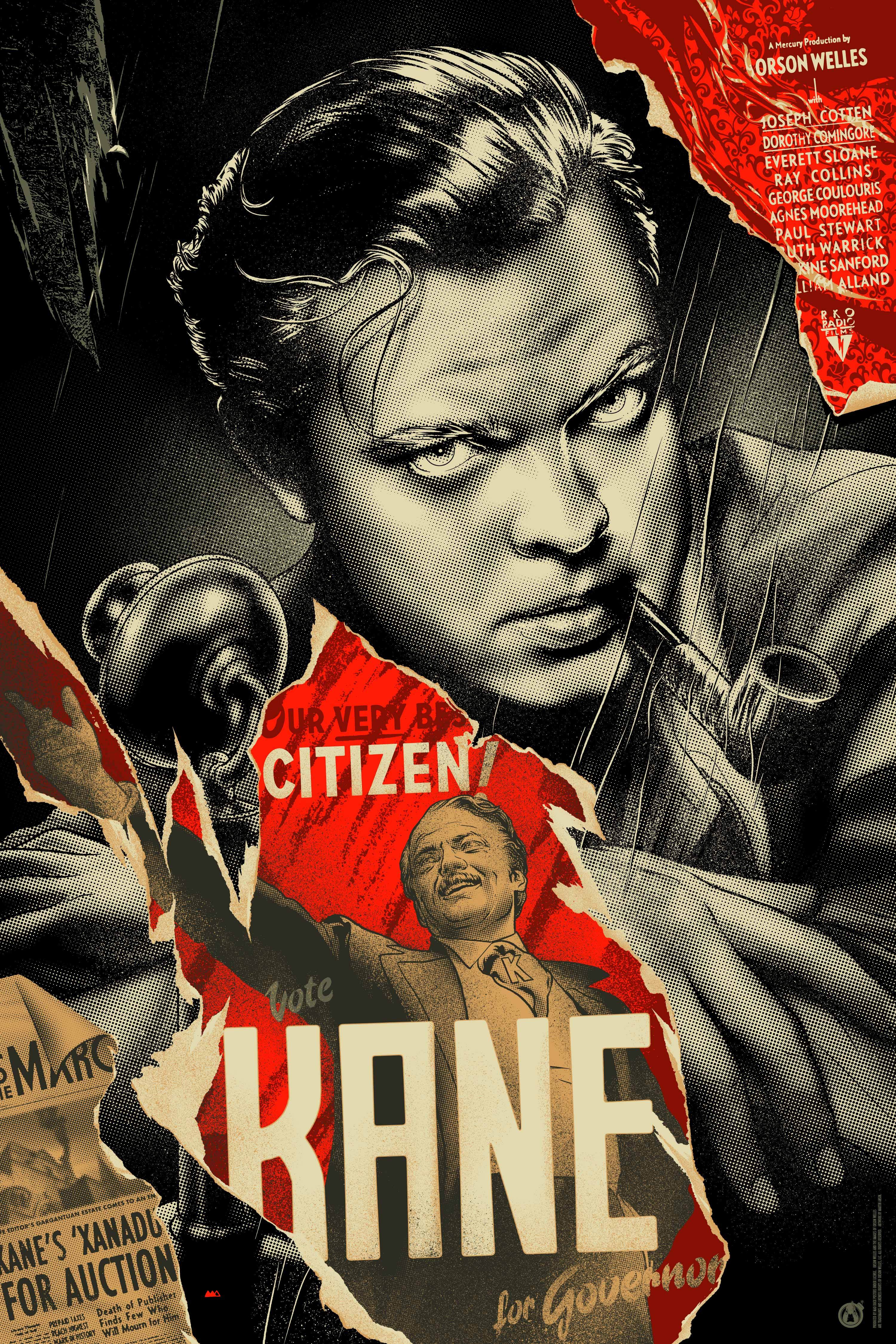
Citizen Kane (1941)
Considered one of the best films of all time and one of four Orson Welles films on this list, Citizen Kane is great. However, out of the four Welles movies on this list, it might be my third or fourth favorite.
Listen, as always with Welles films, the cinematography is great and groundbreaking. The editing is great and groundbreaking. I love that he went after William Randolph Hearst while Hearst was still alive and fairly powerful. I love that he had the balls to make this movie early in his career and as a result he was always a Hollywood outsider afterwards. Even after he gave Kermit the Frog the standard rich and famous contract, he was an outsider.
I just feel people talk about how amazing this movie is because for years this film has been considered amazing. It’s a good movie, worth watching and better than Mank which I found to be… alright.

The Third Man (1949)
This movie is such a classic. Directed and Produced by Carol Reed, with a screenplay written by Graham Greene, this movie is possibly my favorite Film Noir. Possibly.
The on-location filming in recently bombed out Vienna gives it a gritty realness you started to get in films for the first time around this period. The Film Noir’s shot on-location, for me, are some of my favorites. Just a low-budget production working with what they’ve got.
Also, Joseph Cotton’s character is a Pulp writer (he writes Westerns), which is awesome. So is this scene:
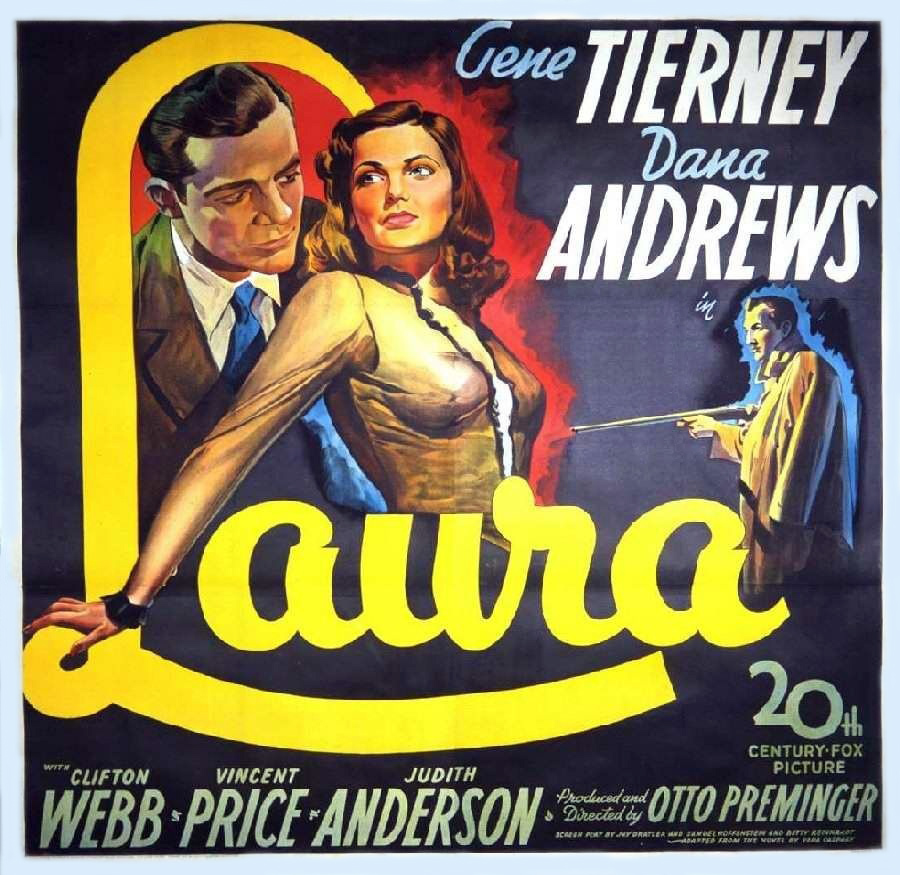
Laura (1944)
In Under the Knife, one of our characters, Dr. Polk has portraits of his dead wife all over his mansion. We had this movie in mind when we thought about the obsession and the unhealthy amount of portraits of his dead wife.
Based on the novel Laura by Vera Caspary this movie’s brilliantly written with a great cast. This movie is a classic. It also features a young Vincent Price, who plays this useless trust fund baby playboy.
It also stars Dana Andrews as NYPD detective Mark McPherson Gene Tierney as Laura Hunt.

Dark Passage (1947)
With our main character getting major plastic surgery in the first act of Under the Knife, it’s safe to say we looked at Dark Passage when we were writing the rough drafts of our manuscript.
Based on a story of the same name by David Goodis. Dark Passage has a cool first act or so where it’s shot from Bogart’s point-of-view.
Bogart has been convicted of a crime he did not commit, ends up breaking out of prison, and gets face altering plastic surgery while on the lam.
This is very similar to the Parker novel, The Man with the Getaway Face, and probably influenced by John Dillinger in real life.
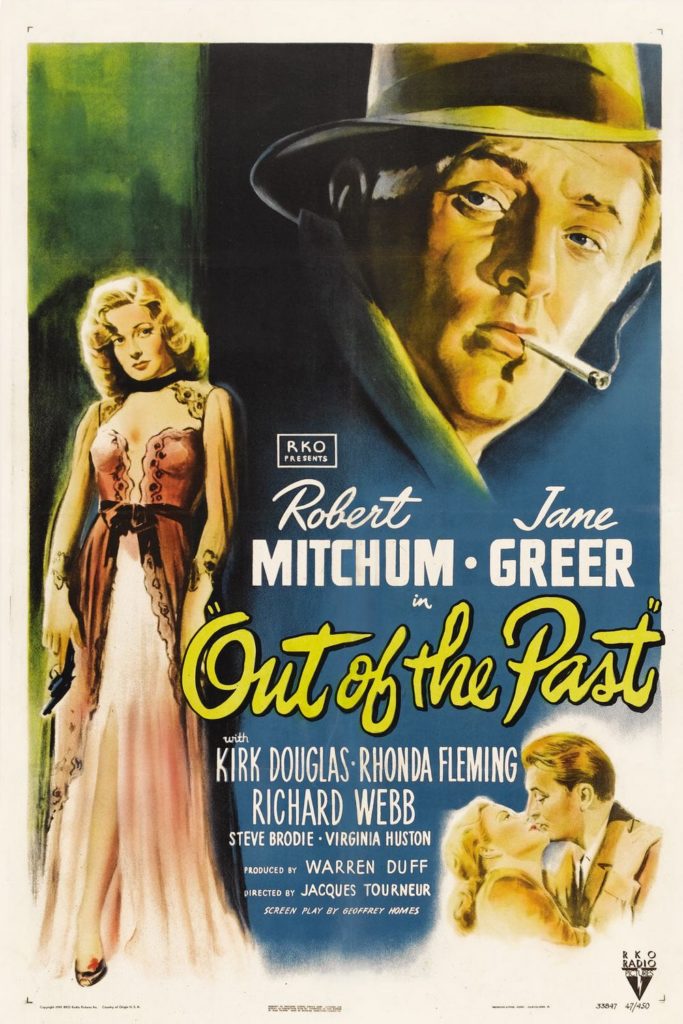
Out of the Past (1947)
A lot of our main character, Kate’s hometown is influenced by the town we meet Jeff Bailey in at the beginning of Out of the Past.
This is a classic film noir from RKO starring one of American Pulp favorite noir actors, Robert Mitchum, who’s mentioned in Under the Knife. Jane Greer plays the femme fatale—she’s great in this, as is a young Kirk Douglas. The screenplay was written by Daniel Mainwaring who adapted it from his own novel and was later blacklisted from Hollywood.
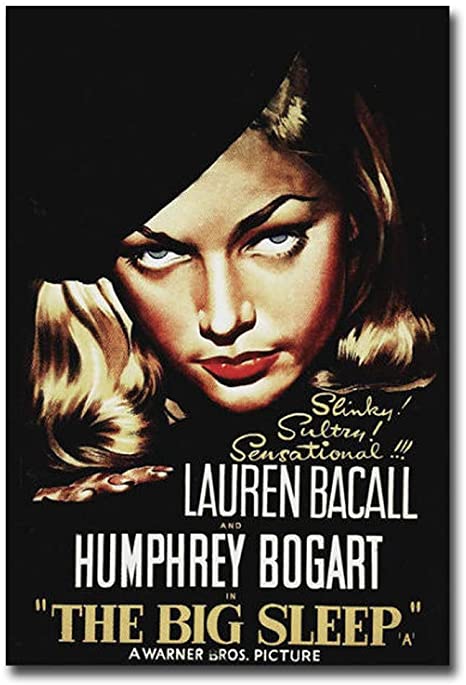
The Big Sleep (1946)
We’ve written about Raymond Chandler and The Big Sleep a few times before, so I won’t go too deep into the backstory. When people think of Film Noir, usually they will think either The Maltese Falcon or The Big Sleep. Out of the two, this one’s my favorite.
As far as influences on Under the Knife goes, General Sternwood’s home, wealth, and power is what inspired Dr. Polk’s mansion. The hot and muggy greenhouse where Marlowe first meets a General Sternwood with a wool blanket over him, that’s very similar to the Playboy Mansion-esque grounds of Dr. Polk’s estate in Holmby Hills.
It’s also a Los Angeles that is closer to the time we were writing. So although we are both very familiar with the City of Angels, it’s good to have these films of that time to serve as a reference point. To a Los Angeles that had more Brown Derby’s than In-N-Outs.

The Killers (1946)
The Killers is the debut movie for Ava Gardner AND Burt Lancaster. Based on Ernest Hemingway’s short story of the same name, Lancaster plays The Swede who falls hard for Ava Gardner’s character, Kitty Collins, the ultimate Femme Fatale.
Through a series of flashbacks we find out his name’s Ole Anderson, an ex-boxer with a shattered hand. His friend Lieutenant Sam Lubinsky (played by Sam Levene) wants him to join the Philadelphia police force. The Swede chooses the exact opposite and starts hanging around a lot of bad apples. It’s a decision that he pays for.

Gaslight (1944)
If there is one expression I’d like to retire from the last 5 or so years it’s “gaslight.” It might be more overused than “Orwellian.”Might be. And I think even less people who say some variant of “gaslight” have seen the movie than people who say “Orwellian” have read Nineteen Eighty-Four or Animal Farm.
That said, this is the movie that brought us the term, “gaslight.” It’s so good I can look past that fact. It also has a young and sexy Angela Lansbury as the femme fatale. Along with Ingrid Bergman and Joseph Cotton.
Also, in Under the Knife, our main antagonist totally gaslights our heroine Kate. But, where Gregory Anton uses gaslight to do the gaslighting, Dr. Polk melts her mind with LSD.

Key Largo (1948)
This is probably my favorite Bogey and Bacall film, they did four together. Edward G. Robinson is great in this as well, as is Lionel Barrymore, and Claire Trevor—who earned the Academy Award for Best Supporting Actress in this. The story is awesome and it still holds up.
Speaking of Bogey and Bacall, we meet them in Under the Knife at a party in Dr. Polk’s mansion, where Humphrey Bogart is so drunk he’s seeing other dimensions.

Gilda (1946)
The movie that inspired Andy Dufrense to dig his way out of Shawshank Penitentiary, Gilda is a classic Film Noir and Rita Hayworth’s best known film. Rita is mentioned throughout Under the Knife—she’s one of the Doctor’s “Darlings.” You need to read the book to find out what the hell that means. Hint: it’s creepy.
In Gilda, Johnny Farrell (Glenn Ford) is a small-time gambler who get’s caught cheating in blackjack. Instead of getting roughed up, Farrell manages to sweet-talk his way into a job with the casino’s owner, Ballin Mundson (George Macready). BALLIN what a name for a casino owner, that’s like a Chef named Cleaver.
Eventually, Mundson introduces Farrell to his new wife, Gilda (Rita Hayworth). Or, Mundson thinks he introduces the two, Farrell already knew her, intimately.

Journey into Fear (1943)
Although he didn’t direct this film, Orson Welles’ fingerprints are all over it. He wrote the screenplay with longtime collaborator Joseph Cotton (Citizen Kane, The Third Man) and produced it.
Even though the script was hacked apart by the studio, and the first cut was censored by the Production Code Administration. The end result is still a very rich, atmospheric, and fun film.
This Film Noir / Spy Thriller features one hell of a magic show and a woman in a catsuit, what more could you ask for?
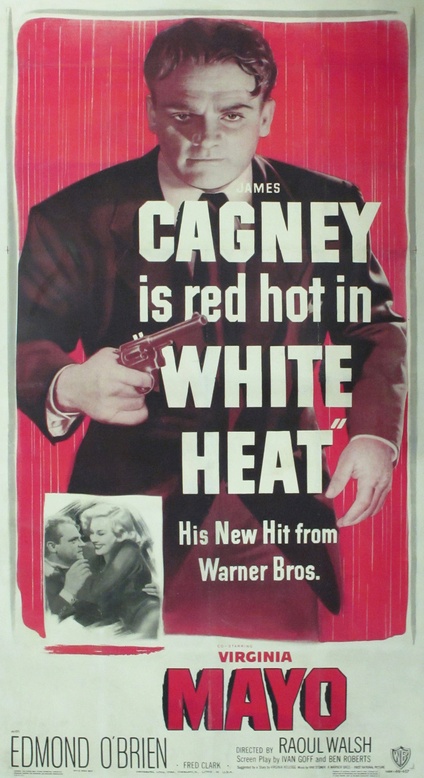
White Heat (1949)
Based on a novel of the same name by Virginia Kellogg, this Cagney movie is considered one of the best Gangster movies of all time. Originally based on Ma Barker, they changed her name to Ma Jarrett and halved her gang of sons from four to two.
Cagney plays a ruthless sociopath, which is what he was always best at.
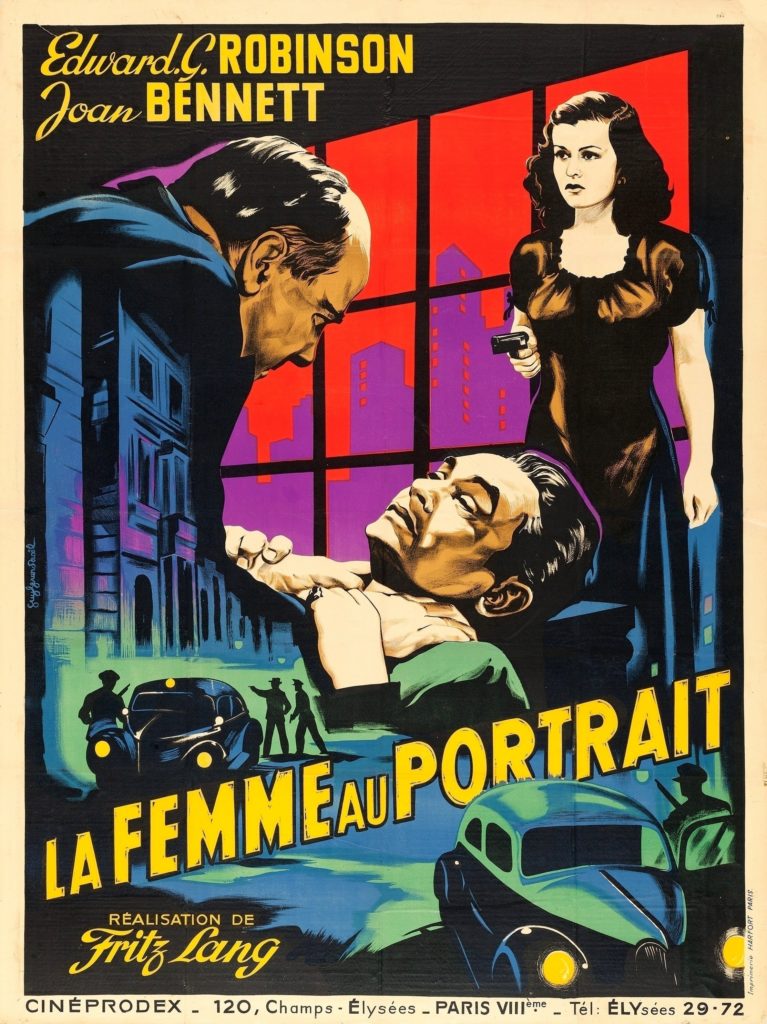
The Woman in the Window (1944)
Apparently, this movie is so dark that the phrase Film Noir was coined by some French guys after watching The Woman in the Window.
The story is based on the novel Once Off Guard by J. H. Wallis. Director Fritz Lang had to change the ending up so that it would pass the Production Code. It’s got plenty of twists and turns especially in the third act.

Too Late for Tears (1949)
Lizabeth Scott is RUTHLESS in this movie. Jane (Scott) and Alan Palmer (played by Arthur Kennedy) are driving their convertible when another car mistakes them for someone else, and tosses a bag of money into their back seat. What should have been a lucrative joy ride turns into one of those sad lotto stories. You know, where someone wins millions of dollars in the lottery only to blow it all away and end up dead within the year. Kind of like that.
This movie is great. The screenplay was penned by Roy Huggins, who adapted it from a serial he wrote for the Saturday Evening Post.
What did we miss?
Surely there was at least one glaring hole we missed in the list of our favorite movies of the decade. Hit us up, let us know what you think: [email protected].
And while we’re on the subject of emails, sign up for our newsletter so you don’t miss out on any other lists of movies where we undoubtedly will forget your favorite movie or something.
References / Further Reading
Virginia Kellogg: The Forgotten Screenwriter Behind A String Of Classic Noirs — Crime Reads
Film Noir: An Encyclopedic Reference to the American Style – by Alain Silver and Elizabeth M. Ward
Film Noir – by James Ursini, Alain Silver, and Paul Duncan
The Art of Noir: The Posters and Graphics from the Classic Era of Film Noir – by Eddie Muller
A Comprehensive Encyclopedia of Film Noir: The Essential Reference Guide – by John Grant





One thought on “American Pulps Favorite Movies By Decade: 1940s”